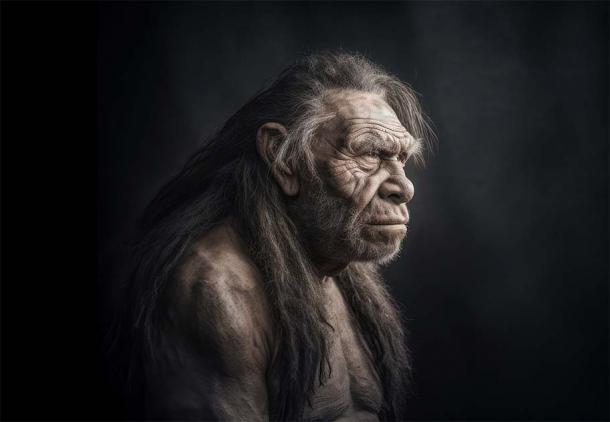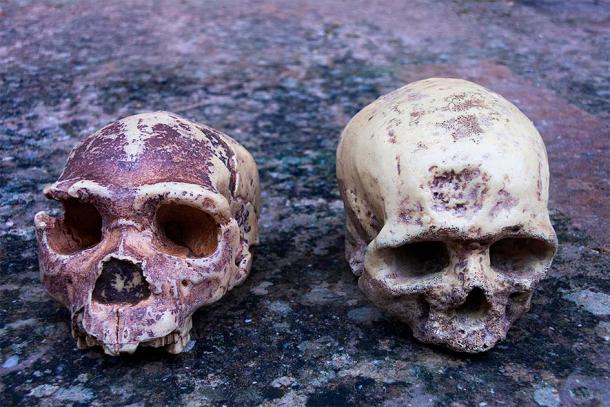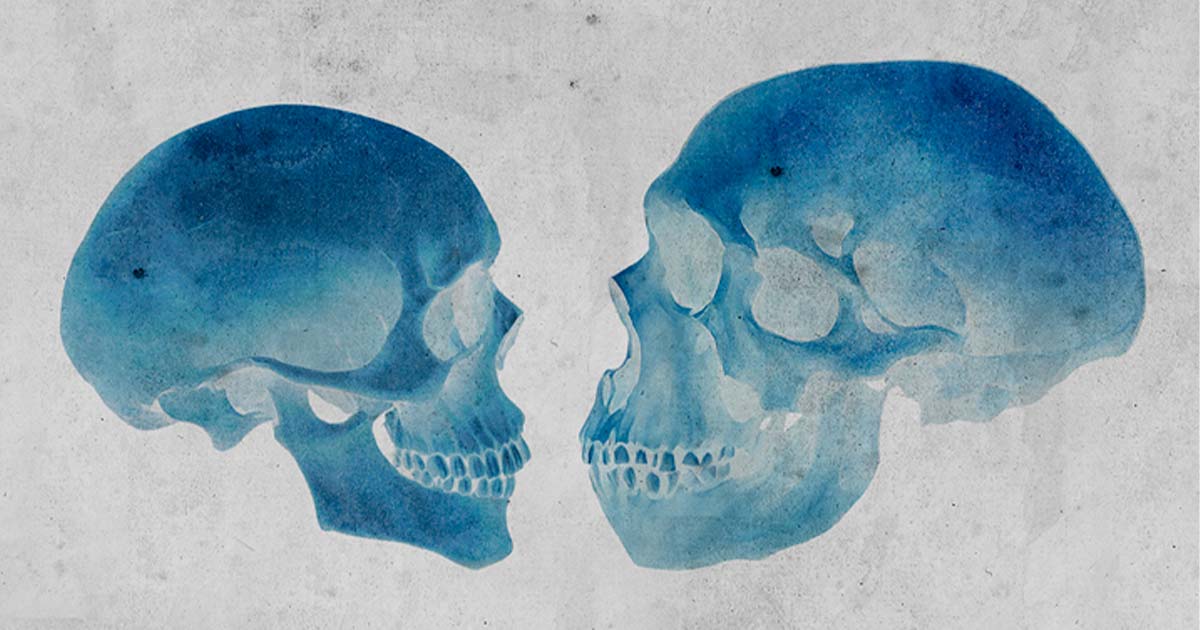Study Tracks Neanderthal DNA, and It’s A Cross-Continental Odyssey!
While Neanderthals went extinct approximately 40,000 years ago, they left a legacy hidden inside the genetic codes of humans, in the form of traces of their Neanderthal DNA. Even though Neanderthals occupying the Eurasian landmass had been separated from Homo sapiens for a long time, the two species were still able to interbreed for a few thousand years after modern humans began arriving in large numbers from Africa 70,000 years ago.
But there are some curious facts about this Neanderthal DNA, the main one being its lack of equal distribution among modern-day population groups. The precise percentage of Neanderthal DNA found in humans varies across regions, with it being more prevalent in the genomes of Asian populations compared to their European counterparts.
- Evolutionary Genetics and the Neanderthal Inside Us (Video)
- Study Reveals Sapiens Copulated the Y Out of Neanderthals
This unequal distribution has long puzzled scientists. But new research carried out by geneticists from the University of Geneva (UNIGE) has finally shed some light on the discrepancy. The results of their painstaking statistical analyses of ancient and modern human DNA, which have just been released in a study published in the journal Science Advances, detail variations in interbreeding patterns in both time and space that provide fresh insight into the fascinating shared history of two hominin species that lived side by side for tens of thousands of years.

The new study has analyzed why Neanderthal DNA is unequally distributed between modern Asian and European Homo sapien populations. (Bartek / Adobe Stock)
Human Migration and the Rise and Fall of Neanderthal DNA
Advanced genetic sequencing first revealed the presence of Neanderthal DNA in the human genome, in fairly significant quantities. The average European or person of European descent will possess about two percent of this exotic genetic material, and overall about 20 percent of the DNA our extinct cousins carried can be found somewhere in the collective human gene pool.
But percentage-wise, this DNA is not distributed uniformly in Asian and European populations. In fact, some modern East Asians have genomes that contain as much as four percent Neanderthal DNA, which is double that found in most Europeans.
This has always been seen as an intriguing anomaly, since Neanderthal skeletons have been found in abundance in Europe and the Middle East but have never been recovered any further east than the Altai Mountains in Central Asia. “So what’s puzzling is that in an area where we’ve never found any Neanderthal remains, there’s more Neanderthal DNA,” study co-author Mathias Currat, a senior lecturer of genetics and evolution at the University of Geneva, told CNN.
In an attempt to explain this curious fact, the University of Geneva research team obtained access to a Harvard Medical School database that includes the sequenced genomes of more than 4,000 humans who lived in Europe and Asia at different times over the past 40,000 years. By analyzing both ancient and modern genetic materials, their goal was to track changes in the presence of Neanderthal DNA, with the hope that they would be able to link it to the migratory patterns of humans during that vast time period.
After completing their statistical analyses of this immense quantity of data, the UNIGE scientists discovered something remarkable. Among the humans who lived in both regions more than 20,000 years ago, the genomes of Paleolithic hunter-gatherers who resided in Europe contained a slightly higher proportion of Neanderthal DNA than those who’d lived in Asia.
This outcome contradicts the current distribution. But it aligns with paleontological data suggesting that Neanderthals predominantly inhabited western Eurasia. Since there were more Neanderthals around in that part of the world, it obviously led to more interbreeding between the two species.
As time progressed, however, the genetic landscape changed. The study showed that during the transition to the Neolithic era, which took place between 5,000 and 10,000 years ago when agriculture began to replace hunting and gathering as the dominant subsistence lifestyle, there was a noticeable decline in the proportion of Neanderthal DNA in European populations.
This decline coincided with the arrival of Anatolian farmers from the region of what is now western Turkey and the Aegean coast. These farmers possessed a lower percentage of Neanderthal DNA compared to the native European populations, and their integration into the European gene pool diluted the Neanderthal genetic signature. The concentration of Neanderthal DNA among Europeans dropped to about two percent, where it has remained to this day.

By analyzing the percentage of Neanderthal DNA in both Asian and European Homo sapiens, scientists hope to piece together the ancient history of Neanderthal and Homo sapiens. (procy_ab / Adobe Stock)
Connecting the Dots of Evolution through Neanderthal DNA Analysis
While the researchers made some valuable discoveries elucidating how Neanderthal DNA first peaked and then declined in humans living in Europe, there are still uncertainties about how all of this impacted Asia. Unfortunately, the Harvard Medical School database is overrepresented with genetic data from ancient Europeans, and at the present time the data collected from ancient Asians is too limited to determine how Neanderthal genetic material penetrated the region in such abundance.
- Modern Humans and Neanderthals Lived Together in Europe for 2,000 Years!
- Study Shows Humans and Neanderthals Interbred Primarily in the Near East
But there is a logical inference that can be made, based on what has been discovered about the impact of migration in Europe. When the Anatolian farmers arrived in Europe 8,000 years ago and displaced the indigenous hunter-gatherers, at least some of them likely migrated eastward, in search of new territory to explore and new resources to hunt or gather.
These migrants would have been carrying higher percentages of Neanderthal DNA in their genomes than modern Europeans, since they left before the existing gene pool could be diluted. Consequently, they may have introduced Neanderthal DNA in relatively elevated quantities to Asia when their migrations took them to those far off lands, possibly explaining why East Asians carry so much Neanderthal DNA yet today.
This explanation may or may not be satisfactory. But the important thing is that scientists now have the ability to evaluate theories like this, thanks to advances in archaeological and anthropological science that have made it possible for researcher to recover and analyze intact DNA from ancient skeletal remains.
In the words of Tony Capra, an associate professor of epidemiology and biostatistics at the University of California-San Francisco who spoke to CNN, the University of Geneva study represents “an example of a very exciting and promising strategy for integrating analysis of ancient human DNA from different geographic locations with modern genomes, to connect the dots of evolution through time and space.”
The possibilities for this kind of research are truly amazing. Thanks to groundbreaking work of this kind, scientists will now be able to solve historical mysteries that were virtually unsolvable just a decade ago.
Top image: Scientists may have discovered why there is a discrepancy between the Neanderthal DNA present in modern-day Asian and European Homo sapiens. Source: Winters860 / Adobe Stock
By Nathan Falde

















